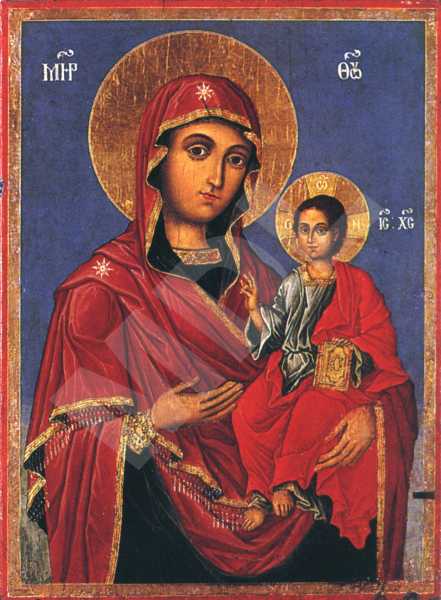The Virgin
Type:
Icon
Period:
From
the beginning of the
19 century
to
the end of the
19 century
Dimiter T. Molerov, born in 1780 in Bansko, son of Toma Vishanov the Moler. One of the best-known painters, a representative of the Bansko school of art, a disciple of his father, influenced by the art of Athos. Author of the murals of the naos in the St Archangels' paraclete in the Rila monastery, the murals in the Church of the Assumption of the Virgin in the Pchelino dependance. In 1840 and 1841 together with his son Simeon Molerov he paints the murals and the sponsors' portraits in St. Nicholas' and St. John of Rila's paracletes in the principal church in the Rila monastery. Among D. Molerov's major achievements in iconography are the following icons: St. Nicholas (1816) from St. Archangel Michael's church in the village of Leshko, Christ All-triumphant with Angels and Cherubim (1833), The Nativity and a Crucifixion from St Elijah the Prophet's church in the village of Usenovo. He has also worked in Belgrade on an invitation by Prince Milosh Obrenovich of Serbia. He died in 1870 in Bansko.
Dimmensions (cm):
46
/ 35
/ 2.5
Location
Country: Bulgaria
Province: Blagoevgrad
Village: Ognyanovo
Church: The Assumption of the Virgin
Source
Country: Bulgaria
Province: Blagoevgrad
Village: Ognyanovo
Church: The Assumption of the Virgin
Description
The icon is a traditional down-to-the-waist portrayal of the Holy Mother of God and a blessing Infant.
Iconographical technique: Combined
The varnish cover is applied evenly in a medium thick layer and has grown dark. The gilding on the nimbi, on the book which Christ is holding, and on the garments is with gold-leaf. Used had also been silver - along the frame.
Base material: Wood
The icon's base is a one-piece softwood panel, machine-made, with two inserted beams on its back. The ground coat is of plaster, applied thinly, with damages along the framing line - mostly in the lower left part.
State, restoration traces and comments
The layer of the painting is destroyed where the ground coat is also destroyed. There are traces of red paint, with which the garments of the Holy Mother of God and of Christ had been overpainted in the lower right corner, as well as along the enclosing frame there.


